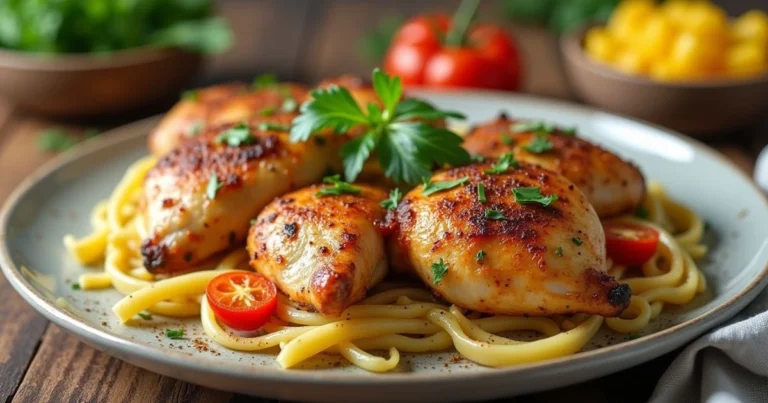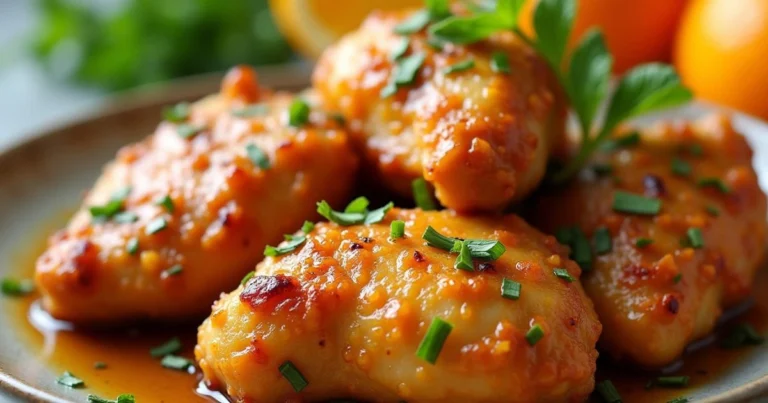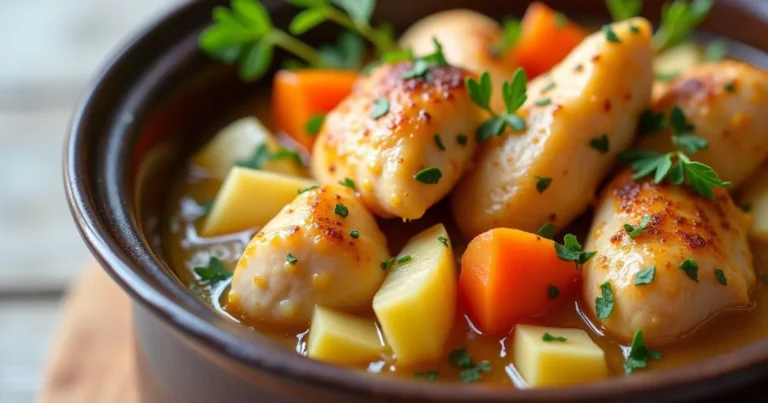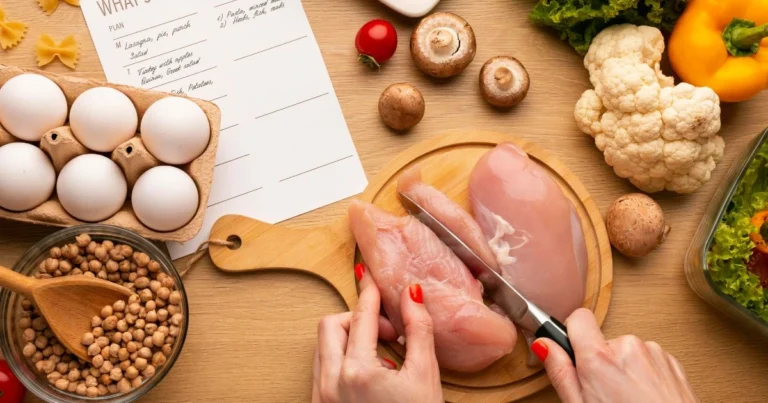The Ultimate Guide to Perfect Chicken Tenderloins in Oven: Juicy, Tender Results Every Time
Picture this: it’s 6 PM on a Tuesday, you’ve just walked through the door after a long day, and your family is looking at you with those expectant “what’s for dinner?” faces. You open the fridge and see those chicken tenderloins staring back at you – your dinner lifesaver. But here’s the thing: how many times have you ended up with dry, rubbery chicken that leaves everyone reaching for extra sauce just to make it palatable?
I’ve been there too. After countless kitchen experiments and a few dinner disasters, I’ve discovered the secrets to achieving perfectly juicy, restaurant-quality chicken tenderloins in oven. Tonight, I’m sharing everything I’ve learned so you can turn this simple protein into a family favorite that has everyone asking for seconds.
Table of Contents
Understanding Chicken Tenderloins: What Makes Them Special
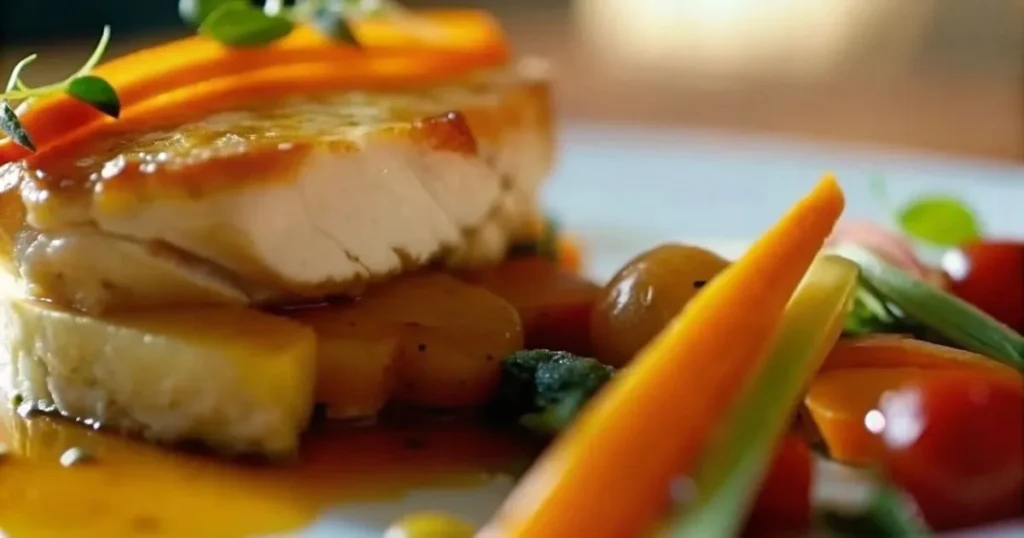
Before diving into cooking techniques, let’s explore what makes chicken tenderloins unique. These small, elongated strips of meat come from the underside of chicken breasts, tucked beneath the main muscle. Unlike their larger counterpart, tenderloins contain less connective tissue, making them naturally more tender and quicker to cook.
Your typical chicken tenderloin weighs between 1-2 ounces and measures about 4-5 inches in length. This compact size means they cook faster than whole breasts, making them perfect for weeknight dinners when time is precious. Plus, their uniform thickness ensures even cooking – no more thick ends that stay raw while thin edges turn to leather.
The Science Behind Tender Chicken Tenderloins in Oven
Understanding the science helps you master the technique. Chicken tenderloins contain approximately 75% water and 23% protein. When you apply heat, the protein fibers contract and squeeze out moisture. Your goal is reaching the safe internal temperature of 165°F without losing too much of that precious juice.
The sweet spot lies in controlling both temperature and time. Higher heat creates better browning through the Maillard reaction, but also increases the risk of overcooking. Lower temperatures cook more gently but may leave you with pale, less flavorful results.
Essential Equipment for Oven-Baked Chicken Tenderloins
Success starts with having the right tools in your kitchen arsenal. You don’t need expensive gadgets, but these essentials will dramatically improve your results:
Must-Have Equipment:
- Rimmed baking sheet (prevents juices from spilling)
- Instant-read thermometer (your insurance against dry chicken)
- Wire cooling rack (optional, but promotes even browning)
- Measuring cups and spoons
- Large mixing bowl for marinades
- Tongs or thin spatula for turning
Choosing the Right Baking Dish
Your choice of baking vessel affects cooking speed and browning. Dark metal pans absorb heat more efficiently, cooking chicken tenderloins faster and creating better browning. Light-colored pans cook more gently but may require slightly longer cooking times.
Glass dishes heat more slowly but retain heat well, making them excellent for even cooking. However, they don’t promote browning as effectively as metal pans. For crispy-skinned results, stick with dark metal baking sheets.
Selecting and Preparing Chicken Tenderloins
How to Choose Quality Chicken Tenderloins
Your success begins at the grocery store. Fresh chicken tenderloins should display a pale pink color with no gray or yellow tinting. The meat should feel firm to the touch, not slimy or sticky. Check the packaging date and choose the freshest options available.
Signs of Fresh Chicken Tenderloins:
- Pink color (not gray or yellow)
- Firm texture without mushiness
- Minimal liquid in package
- Clean, neutral smell
- Recent sell-by date
When possible, choose air-chilled over water-chilled tenderloins. Air-chilled chicken retains less water, resulting in better browning and more concentrated flavor when you cook chicken tenderloins in oven.
Preparation Techniques for Success
Proper preparation sets the foundation for exceptional results. Start by patting your chicken tenderloins completely dry with paper towels. Excess surface moisture prevents browning and can cause steaming instead of roasting.
Remove the small white tendon (called the “silver skin”) that runs along one side of each tenderloin. While not harmful, this tough connective tissue can create an unpleasant chewy texture. Simply grip it with a paper towel and pull it away from the meat.
The Perfect Chicken Tenderloins in Oven Recipe
Basic Oven-Baked Chicken Tenderloins
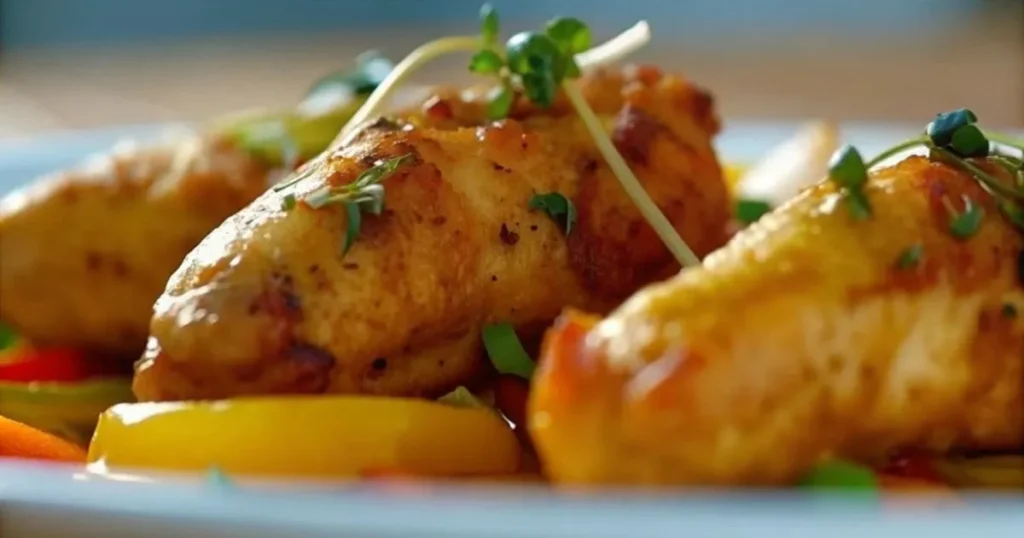
This foolproof recipe delivers consistently juicy results with minimal effort.
Ingredients:
| Ingredient | Amount | Notes |
|---|---|---|
| Chicken tenderloins | 1.5 lbs | Pat dry before seasoning |
| Olive oil | 2 tablespoons | Extra virgin preferred |
| Salt | 1 teaspoon | Kosher or sea salt |
| Black pepper | 1/2 teaspoon | Freshly ground |
| Garlic powder | 1/2 teaspoon | Or 2 fresh garlic cloves, minced |
| Paprika | 1/2 teaspoon | Adds color and mild flavor |
| Dried herbs | 1 teaspoon | Thyme, oregano, or Italian seasoning |
Instructions:
- Preheat your oven to 425°F. This temperature provides the perfect balance between quick cooking and beautiful browning.
- Pat chicken tenderloins completely dry using paper towels. This step is crucial for achieving golden-brown results.
- Drizzle olive oil over the tenderloins and massage it into the meat with your hands. The oil helps seasonings adhere and promotes browning.
- Season evenly with your spice mixture. Sprinkle salt, pepper, garlic powder, paprika, and herbs over both sides, pressing gently to help seasonings stick.
- Arrange on your baking sheet in a single layer, ensuring pieces don’t overlap. Overcrowding leads to uneven cooking and steaming.
- Bake for 12-15 minutes until the internal temperature reaches 165°F. Start checking at 12 minutes to avoid overcooking.
- Rest for 5 minutes before serving. This allows juices to redistribute throughout the meat.
Cooking Time and Temperature Guide
Different oven temperatures yield different results. Here’s your comprehensive guide:
| Oven Temperature | Cooking Time | Best For |
|---|---|---|
| 375°F | 18-22 minutes | Gentle cooking, less browning |
| 400°F | 15-18 minutes | Balanced cooking and browning |
| 425°F | 12-15 minutes | Quick cooking with good browning |
| 450°F | 10-12 minutes | Fast cooking, watch carefully |
Remember, thickness affects cooking time more than weight. Thicker pieces need longer cooking times, while thin tenderloins cook quickly and can easily become overdone.
Flavor Variations and Marinades
Mediterranean-Style Chicken Tenderloins
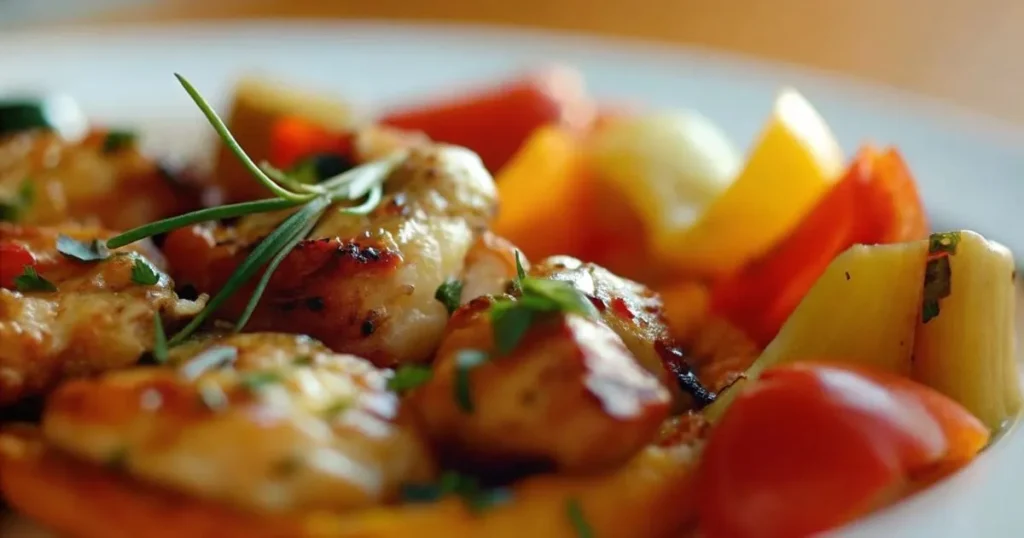
Transport your taste buds to the Greek islands with this flavor-packed marinade.
Mediterranean Marinade:
| Ingredient | Amount | Purpose |
|---|---|---|
| Olive oil | 3 tablespoons | Base and moisture |
| Lemon juice | 2 tablespoons | Acid for tenderizing |
| Greek yogurt | 2 tablespoons | Tenderizer and flavor |
| Garlic cloves, minced | 3 | Aromatic base |
| Dried oregano | 1 tablespoon | Mediterranean flavor |
| Salt | 1 teaspoon | Seasoning |
| Red pepper flakes | 1/4 teaspoon | Heat (optional) |
Combine all ingredients and marinate chicken tenderloins for 2-4 hours. The acid in lemon juice and enzymes in yogurt break down tough protein fibers, resulting in incredibly tender meat when you cook chicken tenderloins in oven.
Popular Marinade Combinations
Asian-Inspired: Combine soy sauce, fresh ginger, sesame oil, and rice vinegar for an umami-rich flavor profile.
Tex-Mex: Mix lime juice, ground cumin, chili powder, and fresh cilantro for a southwestern kick.
Italian: Blend balsamic vinegar, fresh basil, oregano, and grated parmesan for Old World charm.
BBQ Style: Create a sweet and smoky blend with brown sugar, smoked paprika, garlic powder, and Worcestershire sauce.
Advanced Techniques for Perfect Results
The Brine Method for Ultra-Juicy Results
Brining involves soaking chicken in salt water before cooking. This technique increases moisture retention and seasons the meat throughout.
Basic Brine Recipe:
- 4 cups water
- 1/4 cup kosher salt
- 2 tablespoons sugar (optional, for browning)
Dissolve salt and sugar in water, then submerge tenderloins for 30 minutes to 2 hours. Rinse and pat dry before seasoning and cooking. Brined chicken tenderloins in oven stay juicier and have more balanced flavor throughout.
Using a Meat Thermometer Correctly
Your thermometer is your best friend when cooking chicken tenderloins in oven. Insert the probe into the thickest part of the largest piece, avoiding contact with the pan. Digital thermometers provide faster, more accurate readings than analog versions.
Account for carryover cooking – the internal temperature continues rising 3-5 degrees after removing from the oven. Remove your tenderloins at 160°F, and they’ll reach the safe 165°F during the resting period.
Troubleshooting Common Problems
Why Your Chicken Tenderloins Turn Out Dry
Common Causes and Solutions:
- Overcooking – Use a thermometer and remove at exactly 165°F internal temperature
- High heat without monitoring – Lower temperature to 400°F and increase cooking time
- Skipping the rest period – Always let meat rest 5 minutes before cutting
- Insufficient fat – Add oil, butter, or marinade for moisture
- Uneven thickness – Pound thicker pieces to match thinner ones
Preventing Rubbery Texture
Rubbery chicken results from protein fibers contracting too quickly under high heat. Prevent this by:
- Starting with room-temperature chicken (remove from fridge 15 minutes before cooking)
- Using moderate oven temperatures (400-425°F)
- Not skipping oil or marinade
- Avoiding cooking straight from frozen
Serving Suggestions and Pairings
Best Side Dishes for Oven-Baked Chicken Tenderloins

Vegetable Sides:
- Roasted Brussels sprouts with bacon
- Steamed broccoli with lemon butter
- Honey-glazed rainbow carrots
- Sautéed green beans with almonds
Starch Options:
- Garlic herb mashed potatoes
- Wild rice pilaf with cranberries
- Creamy pasta salad with herbs
- Roasted sweet potatoes with cinnamon
Sauce Pairings That Complement Chicken
The right sauce elevates your chicken tenderloins from good to extraordinary:
- Classic marinara – Perfect with Italian-seasoned tenderloins
- Honey mustard – Sweet and tangy complement to herbs
- Ranch dressing – Crowd-pleasing option for picky eaters
- Buffalo sauce – Adds heat and tang
- Chimichurri – Fresh herb sauce with bright acidity
- Teriyaki glaze – Sweet and savory Asian-inspired option
Meal Prep and Storage Tips
Making Chicken Tenderloins Ahead of Time
Cooked chicken tenderloins store beautifully for meal prep. Cool completely before refrigerating in airtight containers. They’ll maintain quality for 3-4 days in the refrigerator or up to 3 months in the freezer.
Reheating Guidelines:
- Oven: 325°F until warmed through (about 10 minutes)
- Microwave: 30-second intervals at 70% power
- Stovetop: Quick sauté in a covered pan with a splash of broth
Storage Best Practices
Store cooked chicken tenderloins in shallow containers to promote quick, even cooling. Label with dates and use within recommended timeframes for best quality and safety.
Frequently Asked Questions About Chicken Tenderloins in Oven
Q: How long do you cook chicken tenderloins in oven at 425°F?
A: Cook chicken tenderloins in oven at 425°F for 12-15 minutes, or until they reach an internal temperature of 165°F. Cooking time may vary based on thickness, so always use a thermometer for accuracy.
Q: Should I cover chicken tenderloins when cooking in oven?
A: No, don’t cover chicken tenderloins in oven if you want crispy, golden exterior. Covering will steam the meat and prevent the beautiful browning that adds flavor and visual appeal.
Q: Can you cook frozen chicken tenderloins in oven?
A: Yes, but add 50% more cooking time and ensure internal temperature reaches 165°F. For best results, thaw chicken tenderloins completely before cooking in oven for more even results.
Q: What temperature should chicken tenderloins be cooked to in oven?
A: Chicken tenderloins should reach an internal temperature of 165°F when cooked in oven, regardless of the oven temperature you choose. This ensures food safety while maintaining juiciness.
Q: Why are my chicken tenderloins tough after cooking in oven?
A: Tough chicken tenderloins in oven usually result from overcooking. The proteins contract too much, squeezing out moisture. Use a meat thermometer and remove them at exactly 165°F internal temperature.
Q: How do you keep chicken tenderloins moist when cooking in oven?
A: Keep chicken tenderloins moist in oven by not overcooking, using oil or marinade for added fat, and letting them rest for 5 minutes after cooking to allow juices to redistribute.
Conclusion
Mastering chicken tenderloins in oven transforms your weeknight cooking game completely. With proper technique, the right temperature, and careful attention to doneness, you’ll consistently create restaurant-quality meals that have your family rushing to the dinner table.
Remember the essential principles: start with quality ingredients, don’t skip the oil, monitor internal temperature religiously, and always allow proper resting time. These simple steps separate mediocre chicken from the memorable meals your family will request again and again.
Whether you’re feeding hungry teenagers, impressing dinner guests, or meal prepping for busy weeks ahead, perfectly cooked chicken tenderloins in oven become your reliable foundation for countless delicious meals. Experiment with different marinades and seasonings to keep things exciting, but never compromise on the fundamental techniques that ensure success.
Ready to transform your chicken game? Grab your ingredients, preheat that oven, and put these techniques into practice tonight. Your taste buds – and your family – will thank you for taking the time to master this essential cooking skill. Share your results and favorite seasoning combinations in the comments below, and let’s build a community of confident home cooks who never settle for dry chicken again!
Did You Try Our Recipe ?
There are no reviews yet. Be the first one to write one.



